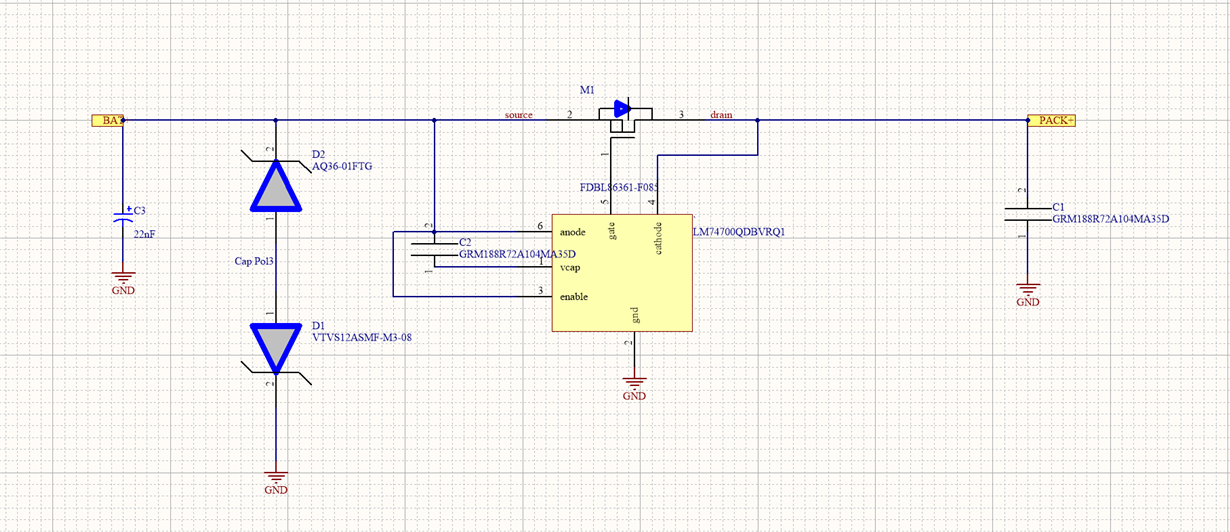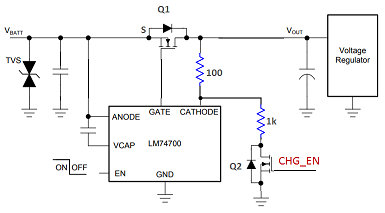I designed a LM 74700 Q1 based circuit for connecting 58.5V battery packs in parallel to prevent forward drop from using normal diodes. I made a PCB according to the reference design given in the datasheet but did not use TVS diodes on the battery side as I was not able to find a diode in my specification. I did a test today in which three battery packs at 56v were connected in parallel using this circuit and 110A was drawn and when I checked the boards after, the Enable Pin (pin no 3) and Ground Pin(Pin number 2) were completely blown (even the pads were blown from my board) and the MOSFET(100V,260A, Rdson 3mOhm) got a drain-source shortcircuit fault. I am thinking the IC was not able to handle the current flowing through it or due to some internal fault in Enable Circuitry extra current was drawn which caused voltage spikes at my MOSFET gate which caused this source-drain short. I recently switched to these MOSFETs(Rdson - 3mohm), I was using 80V,300A,1.3mOhm ones earlier. Should i change this IC or was it some other fault?
-
Ask a related question
What is a related question?A related question is a question created from another question. When the related question is created, it will be automatically linked to the original question.




